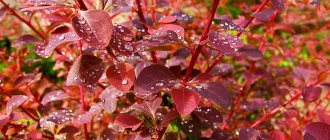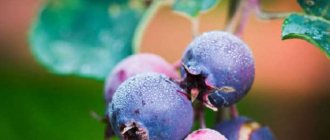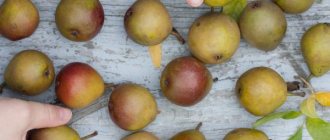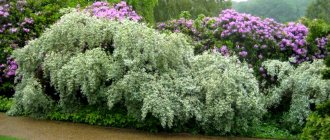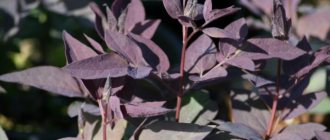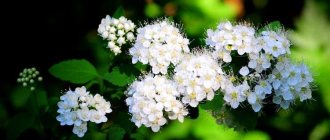Spiraea belongs to the ornamental shrubs that shed their leaves for the winter. Most species are frost resistant. The most common in our gardens are Japanese spirea, gray and the Wangutte hybrid. There are other types and varieties of spirea, photos and descriptions of which are also presented in this article. It is worth getting acquainted with the variety of species and varieties in order to choose the most suitable one. All spireas have similar requirements, but differ in height, number of inflorescences, flowering date, flower color (some bloom white and some pink), and leaf color.
Planting in open ground
Landing location
To plant shrubs, you need to choose an area that is well lit by the sun throughout the day. This requirement also applies to hot southern regions.
When to plant
The right time to plant spirea is September. Favorable weather is cloudy or, even better, rainy, when the soil is well saturated with moisture.
Selection and preparation of planting material
The choice of seedling must be approached with all responsibility and care, since the flowering and viability of the plant will depend on it.
How to choose seedlings:
- The seedling must be free of damage, stains and rot, so you need to carefully examine the branches and roots;
- If the root is covered with an earthen lump, make sure that it is sufficiently moistened and wrapped in plastic or matting;
- Bare roots should be flexible, elastic, not dry, and not break when touched.
Before planting a spirea seedling in open ground, it is necessary to inspect its root system. If damage is found, they should be removed with clean, sharp garden tools and the cuts should be treated. Root stimulants can also be used. If spirea seedlings were purchased together with a lump of earth, it must be soaked. Also pay attention to the crown: it will need to be trimmed, shortening the branches by a third.
How to prepare the soil
Spiraea blooms best and develops on loose, breathable soil with plenty of humus. Of course, plants will grow in poor soils, but in this case they will not be able to show all their beauty.
The mixture for filling the planting hole should consist of river sand (1 part), peat (1 part), turf or leaf soil (2 parts).
Planting scheme
The gaps between planting holes must be made depending on the placement of shrubs and their flowering time:
- Summer-flowering spireas, when planted in a hedge, are planted at a distance of 40-50 cm from each other; when forming several rows, the distance between them is kept up to 30-40 cm. In group plantings, the gaps should be 50-70 cm, sometimes up to 1 m.
- Spring-flowering spireas are planted more freely. They should be spaced at a distance of 0.7-1 m in a hedge and 1-1.5 m in group plantings.
How to plant
The size of the landing holes is determined as follows:
- If the soil on the site is favorable for growing spirea, planting holes must be dug 25-30% larger than the volume of the plant’s root system and up to 40-50 cm deep.
- If the soil on the site is not entirely suitable for the shrub, it is recommended to dig a hole 3 times larger than the root system of the seedling. Both in width and in depth.
Before planting, the soil mixture is first poured into the bottom of the hole, then the seedling is placed, making sure that all the roots are located vertically, and only after that everything is carefully covered with soil.
The shrub is planted so that the root collar (the junction of the trunk with the roots) is at ground level.
Before planting, check the root system and trim off damaged or shriveled roots.
- If the seedling has an earthen lump, it must be watered thoroughly after planting.
- If the root system is bare (without a clod of soil), place it for 12-24 hours in a solution of water and root formation stimulator. This can be Heteroauxin, succinic acid, indolylacetic acid and other drugs that can be purchased at any shopping center for gardeners or flower growers. Plants treated in this way should be immediately planted in a permanent place.
When preparing a planting hole, one important feature should also be taken into account. Although spirea are moisture-loving plants, under no circumstances should water be allowed near their roots (underground or after rain). Therefore, if planting is done in clay soil, a hole is dug 2-3 times larger than the root system of the bush, and a drainage layer (crushed stone or gravel) must be poured into it. The layer thickness should be at least 10-15 centimeters. Then the drainage is covered with soil and young spirea is planted.
general information
Spiraea got its name from its shoots that are surprisingly flexible for a shrub, because from ancient Greek this word literally translates as “bend.” People call the popular ornamental shrub meadowsweet, so it’s likely that you know it by this name.
Spiraea combines truly vital features for our latitudes. It is at the same time very unpretentious, resistant to severe frosts and blooms for a long time even on the hottest days.
Photo: orchardo.ru
There are dwarf spireas that barely stretch up to 20 cm and are well suited for rockeries. But there are also full-fledged tall shrubs 1-1.5, or even up to 2.5 m. The meadowsweet bark has an interesting natural feature - it can peel off. This is its natural life cycle, which periodically frightens inexperienced gardeners.
All spireas have shallow and superficial, but very developed fibrous roots. The branches and leaves can be of completely different types, but the flowers are often similar. They are small, but there are a lot of them, and they are always collected in large lush inflorescences. Shades range from snow-white to rich dark pink.
Photo: stroim-sad.ru
Reproduction methods
Stem removal method
Spiraea branches are quite flexible and easily pressed to the ground, so this propagation method is very popular among gardeners. In the spring, annual shoots are bent and dug into the prepared hole, after which they are covered with soil and watered abundantly. Moderate soil moisture is maintained throughout the season.
To root the plant faster, you need to cut off the bark on the shoot where it touches the ground.
Cutting method
If the preparation is done correctly, 7 out of 10 cuttings take root and produce roots. Cuttings are harvested at different times, depending on the variety of spirea - for summer-flowering ones - in July, and for spring-flowering ones - in early June. Young shoots are cut off at the base, the bark is scraped off in several places and buried in the ground to the level of the leaves. Then water generously. Before the plant takes root, it is necessary to constantly maintain moderate soil moisture.
Bush dividing method
In autumn, the shrubs are carefully dug up. Shake off the soil and divide it into several bushes. When dividing, you need to make sure that the root ball is large enough and has 2 strong shoots. Divided bushes are planted in a new place.
Seed method
This propagation method is practiced by breeders to obtain new varieties. In rare cases, it is used by gardeners. When propagated by seeds, the varietal characteristics of hybrid spiraea are not inherited.
Pest and disease control
Spiraea has a very strong immune system by nature, so most diseases are somehow provoked by improper care. Due to waterlogging, fungal diseases such as verticillium appear. The methods of control are always the same - quickly remove the damaged fragments and treat the bush with insecticides.
Of the pests, spirea is loved by spider mites and aphids, which the vast majority of plants in the garden cannot avoid. We recommend using home remedies whenever possible and resorting to chemical insecticides only as a last resort.
Spiraea is loved by caterpillars, which eat up its succulent leaves, and anthills are often found near it. The rosaceous leaf miner settles on the outer side of the leaf blades. The superficial root system attracts garden rodents and moles.
Photo: go2outback.ru
Recommendations for growing spirea in various climatic zones of Russia
Many varieties of spirea are undemanding in care, so they can be successfully grown in central Russia and even withstand harsh winters with temperatures down to -25 °C. This is due to the fact that modern varieties are adapted to different climatic conditions.
Ural and Siberia
The climate in the Urals is harsh. Almost all types of spirea will grow well in its southern part. For growing shrubs in the middle zone and in the north, it is recommended to choose frost-resistant varieties. The same applies to growing spirea in Siberia. Only low-growing varieties will be able to survive the winter under the snow without major losses. If medium- and tall-growing plants are not covered, then some of the shoots are guaranteed to be frostbitten, and in such conditions it is impossible to achieve decorative and abundant flowering.
Although many species tolerate frost well, preference should be given to the most frost-resistant plants. Most Popular:
- Spiraea gray Grefsheim;
- Spiraea willow;
- Pink spirea (Rosea).
Moscow region and central Russia
Almost all varieties and types of spirea are suitable for growing in central Russia. Shrubs such as Japanese spirea and Nippon spirea need additional shelter for the winter.
The most popular varieties of Japanese spirea
Japanese varieties of spirea are very popular. Among them are spirea Goldflame, Anthony Waterer, Golden Princess and many others. It is worth learning more about this group of plants.
Japanese Anthony Waterer
A compact shrub with a dense crown and very bright flowers, painted in a carmine shade. The flowering period lasts up to 3 months. It coincides with that of hydrangea, so you can plant these crops together - the picture turns out spectacular.
Experts also advise using this spirea in discounts. Frost resistance zone – 4.
Japanese Golden Princess
A dwarf shrub whose height does not exceed 50 cm. It stands out due to its incredibly beautiful flowers. The leaves are bright yellow, but can change color at different times of the year.
Japanese Genpei
A good option for those who want to add variety to their site. The plant retains its decorative properties throughout the winter, and requires minimal care.
The height of the bush reaches 80 cm. The flowering is unusual, tricolor: the flowers are white, pale pink and lilac-red. They begin to open in July and last until September.
Genpei has good immunity and the ability to adapt to urban conditions.
Black plaque on leaves
The presence of black or dark gray plaque on the leaves indicates infection by fungi, bacteria and viruses, which requires immediate elimination of the disease. Black plaque (another name is “sooty”) forms a dried crust and prevents light and moisture from penetrating the leaf, impairing the photosynthesis of the bush.
Fungi do not develop on their own, but after the leaves are damaged by aphids, scale insects, and whiteflies, which form a sticky, sweet environment. This environment becomes fertile ground for the development of sooty mycelium.
As a result, the overall growth of the plant slows down, and the decorative value of the bush decreases. It is useless to focus efforts on destroying the fungus, since you first need to defeat its main cause - insects.
Ways to control pests that leave sticky marks are as follows:
- Copper-soap solution. It is prepared in the ratio of 5 g of copper sulfate per 150 g of laundry soap and 10 liters of water.
- Bordeaux liquid. Mix 100 g of copper sulfate and 150 g of lime in 1 liter of hot water (each). After which the “milk” is filtered and copper sulfate is added.
- Copper oxychloride. Prepared at the rate of 40 g per 10 liters of water.
First, remove the affected leaves or wash off the plaque with water. Then you need to water and treat the spirea foliage with one of the solutions, after which the procedure is repeated after 5–7 days.
Important! As a preventive measure, it is recommended to trim leaves in a timely manner, avoid dense planting and avoid high soil moisture.
7. Flower transplant
Transplantation is carried out only if necessary, before flowering in summer plants and after flowering in spring flowering plants. Unless absolutely necessary, you should not touch the spirea from its place. Transplanting large trees often causes difficulties, and they do not tolerate it well.
It is best to choose a cloudy, cool day for transplantation.
↑ Up,
8.Preparing for winter, shelter
In the conditions of the Middle Zone, most types of spirea overwinter without any particular difficulties, but in more northern regions, where winter is harsh and there is little snow, it is worth providing protection from frost.
Also, you should not leave Nippon and Japanese spirea without shelter - they are sensitive to cold. The most frost-resistant will be oak-leaved, gray, medium and three-lobed spirea and varieties bred on their basis. When grown in open ground, these species tolerate severe frosts down to -45 - 50 degrees.
The shelter is made in mid-autumn, before the onset of night frosts. The plants are first hilled high, sprinkling soil onto the root system, then the bases of the bushes are mulched using peat, humus or sawdust up to 10 cm high.
If necessary, the branches are tied with a rope and bent to the ground, being careful not to break them. Ground cover plants are covered without bending.
The meadowsweet is covered with non-woven material or sprinkled with dry leaf litter, and pine or spruce branches are placed on the bush. It is also worth covering young bushes in the first 1 - 2 years of life in the garden.
↑ Up,
Summer-flowering species
Birch-leaved
Spiraea betulifolia or birch leaf spirea grows up to 1 meter and is very hardy. The name comes from the fact that the plant has birch-like leaves. Blooms in early June.
The species forms very dense and compact bushes. The stems of the plant are red-brown in color, and the leaves are broadly ovate, green above and gray-green below. Birch leaf spirea blooms in June with white flowers collected in inflorescences. These shrubs can grow almost anywhere:
- on dry and wet soil;
- in the sun and in shady places.
The Tor Gold variety has golden leaves, which adds to its attractiveness.
Spiraea birch-leaf variety “Thor Gold”, photo
Billard
Spiraea billardii - Billard's Spiraea grows up to 2 meters, tolerates drought and harsh winters. The flowers are purple-pink and appear in mid-summer. The shrub is resistant to air and soil pollution.
Spiraea Billarda, photo
Japanese
Spiraea japonica (Japanese spirea) is a group of ornamental deciduous shrubs with beautiful flowers and decorative leaves. There are more than 10 varieties of the Japanese species available. Dwarf bushes are ideal as ground cover plants, while taller versions (grow up to 80 cm, and sometimes up to 1.5 meters) are suitable for taller compositions.
Some varieties have yellowish leaves, others have copper leaves, and others have green leaves. In autumn, yellow leaves turn orange, green leaves turn yellow or red. On the eve of winter, before the plant loses its leaves, they turn dark red.
Even in winter, dense bushes decorate the garden. Filigree reddish branches covered with frost crystals or a thin layer of snow look especially impressive. In spring, the tender leaves take on a reddish hue, which eventually turns to a regular green or yellow color.
It is a frost-hardy species and blooms with pink flowers from June to late summer. Japanese spirea tolerates a variety of soil types but requires full sun exposure. This easy to grow plant is recommended for beginner gardeners.
The Japanese type of spirea blooms for a very long time and profusely (from June to September) and has flowers of a pale pink or dark pink hue. Flowers appear on the tops of annual shoots and are collected in rather large and flat inflorescences.
The success of the Japanese species is evidenced by the fact that several dozen different varieties were bred. Dwarf varieties reaching a maximum of 50 cm in height are attractive. Below are the best varieties of Japanese spirea, differing in the color of flowers and leaves, as well as flowering, growth, and height.
Japanese spirea - interesting varieties with photos, names and descriptions
| Varieties | Photo |
| "Goldflame" is a beautiful shrub with a hemispherical shape. The special charm comes from the young leaves, which are initially coppery-orange in color and then turn greenish-yellow. Pink inflorescences appear from July to September. Size: width/height of the bush – 0.8/0.9 m. | |
| "Goldmound" - golden leaves, pink flowers, bush height - up to 60 cm. | |
| "Little Princess" - with green leaves and pink flowers. This is a low-growing ornamental shrub, up to 60 cm tall. | |
| “Albiflora” is a slow-growing, low variety of spirea, reaching a height of 50 cm. The variety has hard, straight shoots and light green leaves (up to 7 cm long) of a lanceolate shape. The shrub blooms in July-August with small white flowers formed into dense inflorescences. | |
| "Anthony Waterer" is a rather low shrub (80 cm), compact, semicircular in shape with hard, thin shoots. The large (7 cm long) leaves initially have a reddish tint, becoming dark green over time. Additional leaf decoration is white or yellow spots. The variety looks most beautiful from June to September, when it blooms with bright red flowers collected in flat inflorescences with a diameter of 8 cm. The shrub is frost-resistant and tolerates drought well. To fully appreciate its beauty, it is worth planting plants in small groups or creating an unformed hedge. | |
| “Crispa” is a slow growing bush that is quite low (50-60 cm). Young leaves are red and then turn dark green. The bush looks most beautiful in summer: it blooms in July-August with beautiful red-pink flowers. | |
| “Froebelli” is a dense, compact shrub, reaching 1 m in height. The wide elliptical leaves are initially brown-red, later turning dark green. The variety blooms from July to September with dark, red-violet flowers collected in wide inflorescences. | |
| “Golden Princess” is a variety with very decorative leaves that turn brown-orange in spring, yellow in summer, and change color to red-copper in autumn. | |
| "Goldflame" is a dense and compact, slow-growing shrub. The height of the shoots is 80 cm. The bush has decorative shoots, the leaves are yellow-orange in spring, golden-yellow or green-yellow in summer, and acquire warm copper-orange tones in autumn. The flowers of the variety are collected in small inflorescences of red-pink color. | |
| "Golden Carpet" Bush with a compact, round shape. The leaves are yellow, elliptical, young growths are yellow-brown. Blooms at the turn of June-July. Size: 0.5 meters. | |
| "Goldmound" is an ornamental shrub with yellow leaves and lilac-pink flowers that bloom in July-August. The leaves remain intensely yellow until the late autumn months. The variety forms dense, low bushes, up to 40 cm high. | |
| “Little Princess” is a slow-growing, dense shrub that has a dome-shaped shape and reaches a height of 60 cm. Tiny (approximately 2-3 cm long) leaves are dark green and lilac-pink in color. | |
| "Macrophylla" - a shrub with rigid, straight shoots and can grow up to 1.5 m in height. The variety is characterized by decorative, large (up to 15 cm long) leaves. The apical leaves are dark red during the summer months, becoming pastel colors in the fall, ranging from red, orange, and yellow. The flowers of the variety are inconspicuous. The bushes look most beautiful planted individually or in groups. The variety is suitable for creating low, unformed hedges. | |
| “Pruhoniciana” is a dense, widely growing shrub, 50-60 cm high. The leaves of the variety are dark green; in autumn they change color to red and orange. The shrub blooms in June-July and has interesting flowers: pale pink with a darker center. The flowers are collected in fairly large inflorescences. The variety is ideal for ridges and low, unformed hedges. The shrub can be planted in rock gardens. | |
| "Shirobana" is a dense, compact shrub. Quite low, can grow up to 1 meter in height. The shrub has light green, elongated leaves. A distinctive feature of the “Shirobana” variety is its two-color flowers: pink and white. The variety blooms from July to September. | |
| "Bulata" (Bullata). A low shrub up to 40 cm high. Pink flowers appear in June on the shoots of the current year. Has low soil requirements. The plant is ideal for rock gardens as an attractive plant cover. | |
| Country Red. A variety with a dense, spherical crown, up to 80 cm in height. The dark green leaves turn purple and burgundy red in the fall. Red flowers against a background of green leaves develop in May-June. The plant is undemanding. | |
| "Pygmaea Alba" Shrub with a flattened spherical shape. The leaves are light green. White flowers appear at the end of this year's shoots in June-July. | |
| "Genpei" Low variety with a rounded crown. The flat flower umbrella changes color over time. From June to August you can admire flowers ranging from white to pink. |
Willow
Spiraea salicifolia – Spiraea salicifolia usually blooms in June-July. It can be found growing wild in wet meadows and dry soils. The species is very unpretentious and tolerates almost all conditions. The shoots are tough, the bush forms underground stolons, thanks to which the plant reproduces quickly. Height: up to 2 meters. The flowers are usually pink, but white are also found.
Willow spirea, photo
Dense-flowered
Spiraea densiflora (Dense-flowered spirea) is a rather low shrub, growing up to 60 cm in height. The plant has intricately curved red-brown shoots and dark green, wrinkled leaves that change color to orange-yellow in the fall. The bush looks most beautiful in June-July, when dark pink flowers appear, collected in dense umbrellas, placed on the tops of the shoots. Densely flowered spirea is drought-resistant and is grown even in cool regions of our country because it is not sensitive to frost. These shrubs are ideal for low, unedged hedges.
Douglas
Spiraea douglasii - Douglas spirea reaches a height of 1.5 m. The variety quickly enters the growing season - leaves appear in early spring. The bush produces impressive inflorescences (20 cm long) pink or purple. Blooms from June to July. The shrub is completely frost-resistant. Well suited for creating unformed hedges from several types of compact shrubs.
Alba (white)
In the wild, white spirea grows in wet meadows and open spaces along streams or lakes in North America. The stems are hard, straight, brown-yellow, glabrous. The inflorescences are 10-12 cm long and consist of small white flowers that bloom in June–July. Shrub with low soil requirements, resistant to low temperatures and drought. Prefers loamy, heavy soils and can grow in soils with moderate moisture. Tolerates sunny and shaded positions well.
When should you apply fertilizer?
The first feeding of spirea is done during planting of the crop. Subsequently, the procedure is repeated three times a year: in spring, summer and autumn. Moreover, it is worth noting that at each time of the year it is necessary to use certain compositions:
- Spring. The first fertilizing is done immediately after the plant emerges from hibernation and begins to bloom with buds and leaves. Manure or urea, diluted in water in a ratio of 1 to 10, is ideal as a fertilizer. However, bird droppings should not be used as fertilizer, as it can be detrimental to the crop. It is best to give preference to pig, cow or horse manure.
- Summer. At the beginning of the warm season, spirea should be fed with complex mineral fertilizers, which contain large amounts of potassium. This is especially true for those crops whose flowering period occurs in the hot months. Dilute the drug strictly according to the instructions! In case of an overdose of microelements, the flowers will begin to fall off, and the buds that have not set will simply stop forming.
- Autumn. In order to properly prepare the crop for hibernation, it is recommended to use mineral fertilizers based on phosphorus. As a rule, such preparations are applied to the soil in dry form. It is necessary to scatter the granules before the rain so that the soil absorbs them as quickly as possible. If no precipitation is expected, you can use a hoe to dig them into the top layer of soil yourself.
The basic rule for feeding any ornamental crop is to strictly follow the manufacturer’s instructions or the advice of experienced gardeners. Even a slight overdose can cause the death of the plant. This is especially true for the application of organic and nitrogenous fertilizers, which simply burn out the root system of the plant in too concentrated a form. If you doubt your actions, then it would be best to refrain from feeding at all.
Where to buy, price
Purchasing the treasured seedlings will not be difficult. They are sold not only in garden centers and garden supply hypermarkets. You can order the look you like in the online store. The price for one bush starts, on average, from 250 rubles.
Japanese spirea, even in the photo, fascinates with its stunning appearance, and planting and caring for the shrub is quite simple. Every novice gardener can try his hand at growing this miracle.


